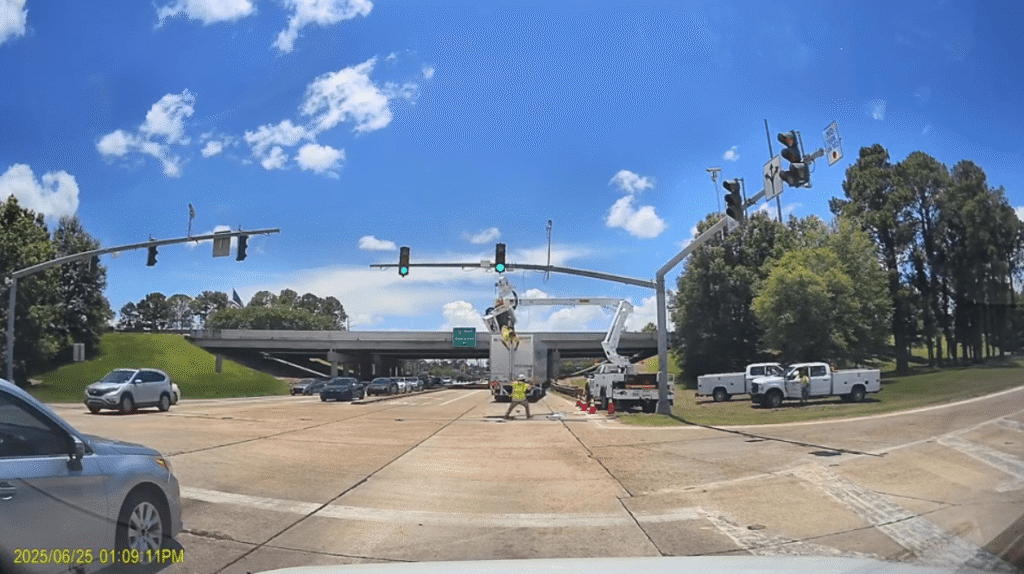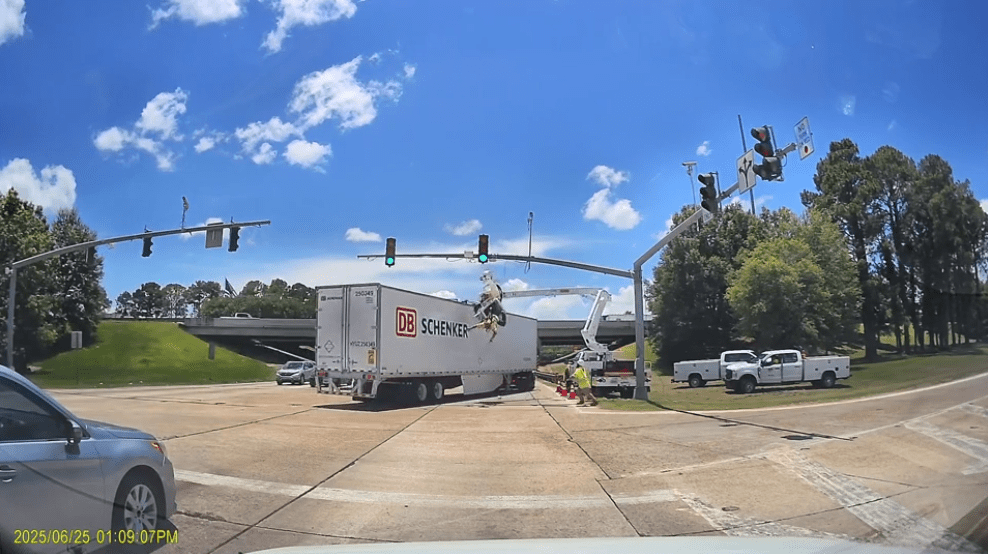In a moment that stunned drivers sitting at a red light, a Louisiana transportation worker was suddenly left hanging high above the road — upside down — after being hit by a passing truck.
It all happened on Wednesday, June 25, in Denham Springs, a small city about 20 miles from Baton Rouge. A worker with the Louisiana Department of Transportation and Development (DOTD) had been stationed in a raised bucket truck, fixing a stoplight above a busy intersection.
But as shown in dashcam footage captured by a nearby driver, things took a terrifying turn when an 18-wheeler making a left turn clipped the bucket. The impact sent tools flying and caused part of the crane arm to break. The worker, thankfully strapped into a harness, ended up dangling mid-air, upside down, his equipment and debris scattered across the intersection below.
“We never expected to see this today while waiting for a green light,” wrote Bill Atkinson, the driver who recorded and shared the footage on social media.

According to reports from WDSU and Louisiana First News, police were called to the scene just before 1:10 p.m. that afternoon. The Denham Springs Police Department later confirmed that the DOTD worker had only minor injuries — and, remarkably, didn’t need to be hospitalized.
An investigation into the crash is underway. Because the stoplight involved is state-operated, the DOTD is assisting in the case.
Officials emphasized that safety protocols were in place. Workers like the one involved are always required to wear a harness when operating in a bucket truck. Sometimes signs or partial lane closures are added for extra protection, but it’s not always standard, depending on the situation.
“That is a mandate we have: When you’re in that bucket truck, you’ll have that harness on,” said East Raiford, speaking to local ABC affiliate WBRZ.
Following the incident, the DOTD reminded the public to stay alert at all times while driving. Maintenance work on roads can happen day or night, and drivers need to stay cautious.
“Anytime there’s people working in the roadways, there’s signage that’s required or there’s barricades saying this part of the lane will be closed,” Raiford added. “Safety is always the number one priority for us.”

